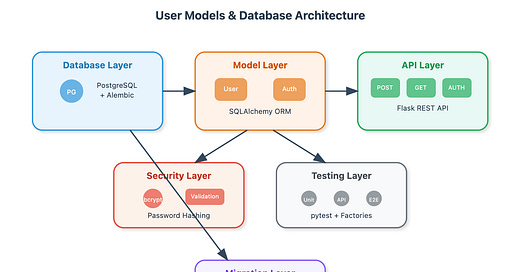Day 8: User Models & Database - Building the Authentication Foundation
Part of the 180-Day Hands-On Full Stack Development Series
The Foundation of Every Distributed System
Think of user models as the birth certificate of your distributed system. Just like how a passport identifies you across different countries, user models create a unique digital identity that follows users across every component of your infrastructure monitoring platform. Today, we're building the authentication backbone for InfraWatch - our production infrastructure management system.
Why User Models Matter in Distributed Systems
In distributed systems processing millions of requests per second, user authentication isn't just about login pages. It's about creating a consistent identity layer that spans multiple services, databases, and geographic regions. When Netflix routes your viewing request through dozens of microservices, each service needs to know who you are without calling the authentication service every time.
The user model becomes your system's memory of identity - storing not just credentials, but permissions, preferences, and audit trails that enable secure, personalized experiences at scale.
[📊 Image: Component Architecture Diagram]





